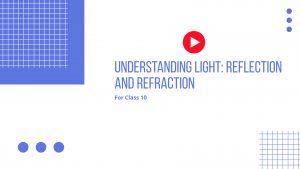NCERT Solutions for Social Geography Class 10 Chapter 5
NCERT Solutions for Class 10
Social Science (Geography)
Chapter 5– Minerals and Energy Resources
(i) Which one of the following minerals is formed by decomposition of rocks, leaving a residual mass of weathered material?
(a) coal
(b) bauxite
(c) gold
(d) zinc
Answer: (b) bauxite
(ii) Koderma, in Jharkhand is the leading producer of which one of the following minerals?
(a) bauxite
(b) mica
(c) iron ore
(d) copper
Answer: (b) Mica
(iii) Minerals are deposited and accumulated in the stratas of which of the following rocks?
(a) sedimentary rocks
(b) metamorphic rocks
(c) igneous rocks
(d) none of the above
Answer: (a) sedimentary rocks
(iv) Which one of the following minerals is contained in the Monazite sand?
(a) oil
(b) uranium
(c) thorium
(d) coal
Answer: (c) thorium
2. Answer the following questions in about 30 words.
(i) Distinguish between the following in not more than 30 words.
(a) ferrous and non-ferrous minerals
(b) conventional and non-conventional sources of energy
(ii) What is a mineral?
(iii) How are minerals formed in igneous and metamorphic rocks?
(iv) Why do we need to conserve mineral resources ?
Answer:
(i)
(a) Ferrous minerals are metallic minerals that include iron, such as iron ore, manganese, nickel, and cobalt.
Non-ferrous minerals, which are also metallic, do not contain iron. Examples include gold, copper, zinc, and others.
(b) Conventional sources of energy consist of firewood, cattle dung cake, coal, petroleum, natural gas, and electricity (both hydel and thermal).
Non-conventional sources of energy include solar power, wind energy, tidal power, geothermal energy, biogas, and atomic energy.
(ii) A mineral is a natural substance found in the Earth that has a specific chemical composition and structure. Minerals are solid and formed through geological processes over millions of years. They can be found in rocks and soil and are important because they provide essential elements for various uses, such as building materials, metals for industries, and nutrients for plants and animals. Examples of minerals include quartz, feldspar, iron ore, and diamond.
(iii) Minerals in igneous and metamorphic rocks can be found in cracks, crevices, faults, or joints. Smaller deposits are known as veins, while larger ones are called lodes.
(iv) Mineral deposits only one percent of the Earth’s crust. It is crucial to conserve mineral resources because the natural processes that create minerals are extremely slow, resulting in replenishment rates that are much lower than our current rate of consumption.
3. Answer the following questions in about 120 words.
(i) Describe the distribution of coal in India.
(ii) Why do you think that solar energy has a bright future in India?
Answer:
(i) In India, coal is found in rock formations from two main geological ages:
1. Gondwana (approximately 200 million years old)
2. Tertiary deposits (approximately 55 million years old)
The major Gondwana coal resources are located in:
• Damodar Valley (West Bengal – Jharkhand), where Jharia, Raniganj, and Bokaro are significant coalfields.
• Godavari valley
• Mahanadi valley
• Son valley
• Wardha valley
Tertiary coal deposits are found in the northeastern states of Meghalaya, Assam, Arunachal Pradesh, and Nagaland.
(ii) Solar energy holds promise in India due to our tropical climate, offering vast opportunities for harnessing solar power. It is gaining popularity in rural and remote areas. India’s largest solar power plant, located near Bhuj at Madhapur, uses solar energy to sterilize milk cans. Solar energy adoption is expected to reduce rural dependency on firewood and dung cakes, promoting environmental conservation and enhancing agricultural productivity through adequate manure supply. Solar energy is a renewable and non-conventional energy source. Its widespread use not only benefits the environment but also reduces our reliance on oil and gas.
Study materials
- Refernce Books
- NCERT Solutions
- Syllabus







